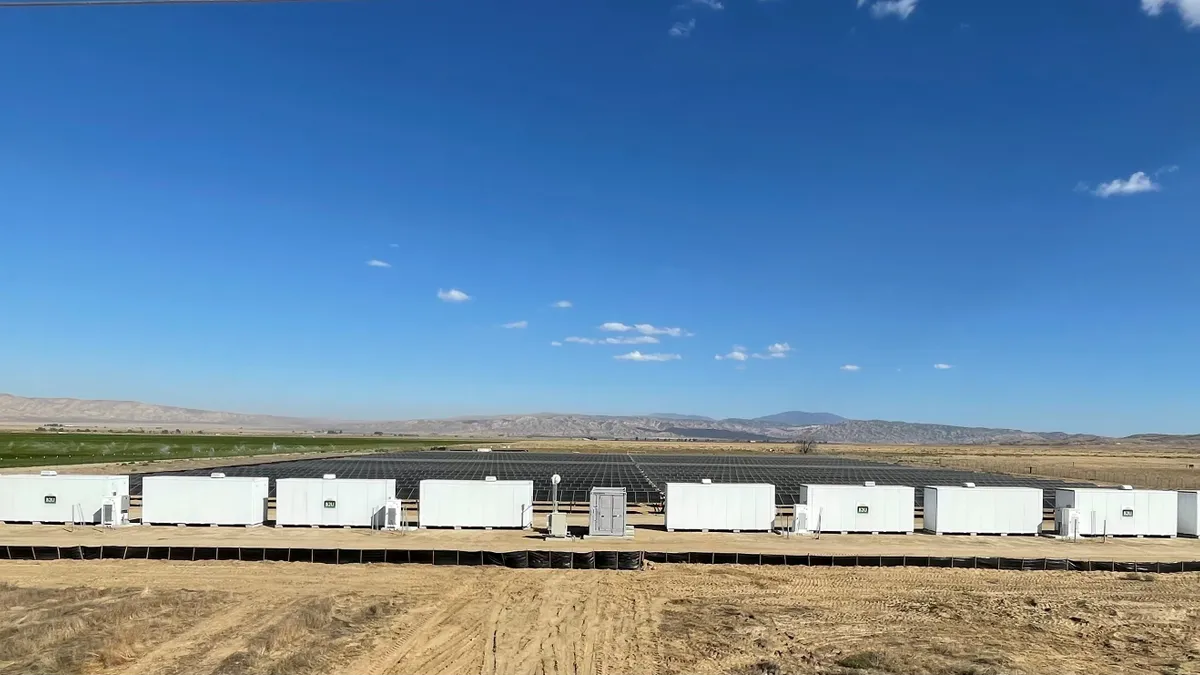Dive Brief:
- B2U Storage Solutions, an energy storage developer that specializes in using second-life electric vehicle batteries, has kicked off operations at its second grid-connected hybrid storage facility in Santa Barbara County, California, near New Cuyama, the company announced Tuesday.
- The 3 MW/12 MWh facility uses hundreds of repurposed EV batteries from Honda, and charges from 1.5 MW of solar generation, according to B2U. The project is interconnected into Pacific Gas & Electric’s distribution system, and sells electricity and services into the California Independent System Operator market.
- The second-life EV battery market is forecast to reach $7 billion in value by 2033, according to a March report from market research firm IDTechEx. Most EVs use lithium-ion batteries that can’t continue to be used in vehicles after roughly eight to ten years. However, depending on their residual capacity and “state of health” — which concerns their cell aging — they can be used in less strenuous ways, like stationary energy storage, according to the report.
Dive Insight:
B2U’s Cuyama project is the second of its kind, the company said. In February, B2U launched a 28 MWh facility in Lancaster, California, which includes 1,300 EV battery packs from different automotive manufacturers. That project is the largest operational energy storage site in the world that uses second-life EV batteries, according to the company.
B2U uses a technology it calls ‘EV Pack Storage,’ which it says allows it to use old EV battery packs for new purposes in a plug-and-play fashion, with virtually no repurposing costs.
The Cuyama hybrid facility, along with the hybrid facility in Lancaster, are the first large-scale storage facilities using EV battery packs deployed in a plug-and-play fashion, that sell power and grid services directly into the grid, Freeman Hall, CEO of B2U Storage Solutions, said in an email.
“To our knowledge, these facilities are the first of their kind anywhere,” Hall added.

Experts have been eyeing the potential of deriving second uses out of end-of-life EV batteries for a while. In 2019, a McKinsey article estimated that stationary energy storage powered by used EV batteries could exceed 200 GWh by 2030. That paper pointed to three applications for used EV batteries — providing reserve energy capacity to ensure grid reliability, deferring investments in the transmission and distribution system, and power arbitrage.
Repurposing old EV batteries as different forms of energy storage, like with microgrid systems, can help extend their lifespans and more broadly can help make the electrification of the transportation sector more sustainable, a July report from the Natural Resources Defense Council found.
Batteries’ capacities decline over their lifetime and after a certain point — say when they get to 70% or 80% of their original capacity — they may not be useful in EVs, according to Jordan Brinn, author of the report and an advocate with NRDC.
But they could still make a lot of sense for stationary storage, since you can combine lots of batteries together to create an outage management system for the grid, she added.
“So, essentially, when you reuse these batteries, you’re getting more life out of that battery, which inherently reduces the life cycle impact of manufacturing that battery,” she said.
EV batteries contain minerals like lithium, nickel, cobalt, manganese and graphite, which can be associated with pollution and health impacts in the areas around them, the NRDC report noted. In that context, second-life applications for EV batteries can reduce the amount of materials that need to be mined for the sector. Depending on the condition of the second-life battery, it can be used to provide energy storage for up to 15 years after it can no longer be used in an EV, according to the report.














